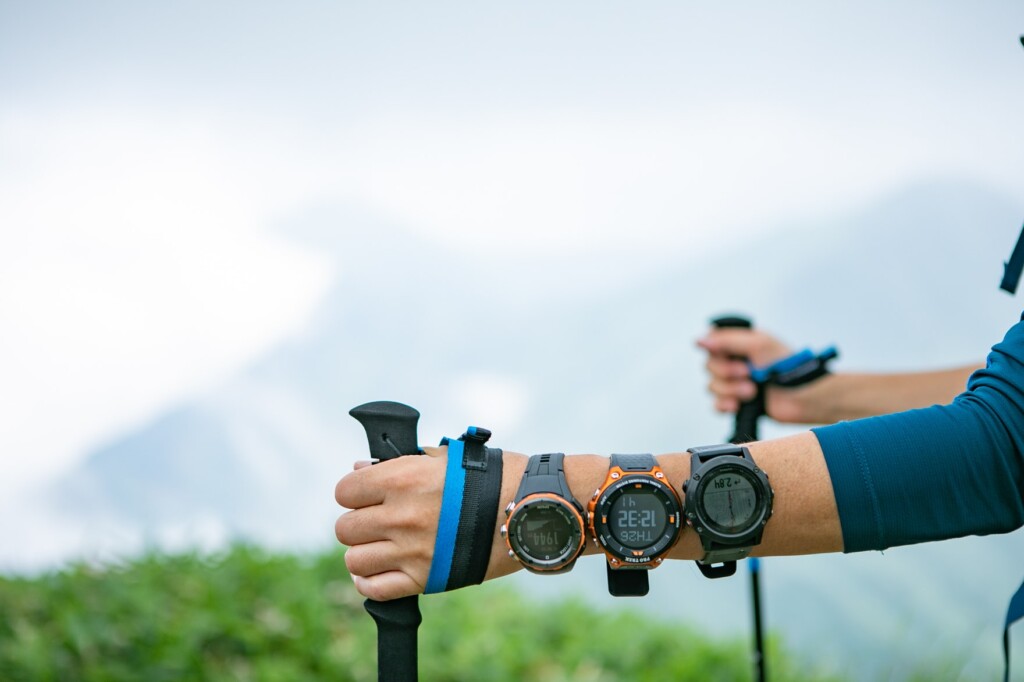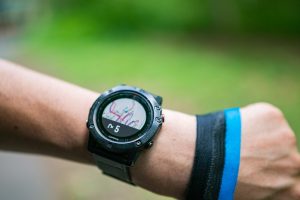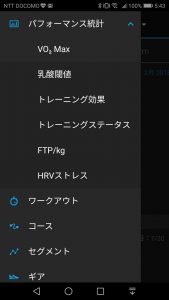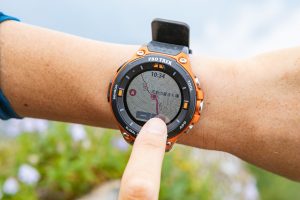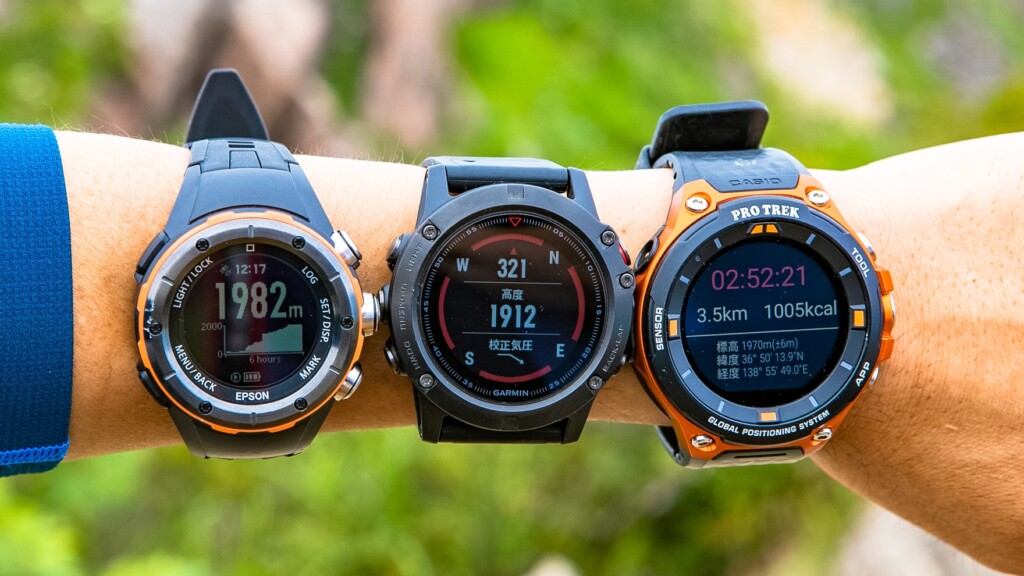
Purchase Guide: After trying out all CASIO, GARMIN, and EPSON, we found out the best solution for outdoor watches with GPS for each purpose [Part 2]
Outdoor watches with GPS are now becoming indispensable gear in sports and outdoor fields. It is not just ABC (altitude, pressure, and orientation) functions, but is continuing to evolve, allowing you to understand your current location and display maps offline.
Among these GPS outdoor watches, this project is to compare the three typical models designed for use in mountain climbing: the CASIO PRO TREK Smart WSD-F20 , the GARMIN fenix 5x Sapphire , and the EPSON Wristable GPS for Trek MZ-500 , which are actually used at the same time for mountain climbing, and to see the characteristics of each model and their strengths and weaknesses.This time, we will compare what and how much they can be used for day climbing. I hope this will be of some help to those who were just wondering whether to buy it or not.
If you would like to read the previous reviews that summarize the appearance and hardware usability, please see the page below.
table of contents
table of contents
- Items and test environments that were compared and tested this time ( first part )
- Detailed comparison review (Part 1reference)
- Appearance ( first part )
- General screen and ease of viewing of maps ( first part )
- Waterproof and durability ( first part )
- Usability and interface ( see first part
- Battery life ( first part )
- Functionality and what can be done
- Accuracy
- Summary - What are the recommended types? ~ (Page 2)
- [Reference] Specifications and Function Comparison Table
Detailed comparison review (part 2)
6. Functionality and what you can do
Let's compare the functions of each model, or to put it simply, the types of things that can be done with this watch. The three models we compared this time share the basic functions of checking clock, direction, altitude, and atmospheric pressure, and tracking location information using GPS. However, as you enter more detailed areas, what you can do will vary greatly depending on your individuality. Of course, these devices are not just for mountain climbing, so the functions they are looking for differ depending on the purpose of the user, so the impressions of each person differ from person to person, but this time we will mainly compare and evaluate features related to mountain climbing and hiking.
GARMIN - A powerful fitness support machine for athletes
First of all, as expected, in terms of functionality, the richness and detail of the fenix 5x To be honest, it covers so many functions that I cannot write about here, so I will only touch on the important points here. As expected of a flagship model, it can be used for a variety of activities, including mountain climbing and trail running, running, running, cycling, swim, canoeing, fitness, golf, and more, and data measured by a wealth of sensors, including optical heart rate monitors, is displayed on the screen to suit each activity. What's more, the displayed content can be customized in great detail, so it's amazing that you can arrange it in your own way, even if you're ready to go. Offline maps are already built in, so you can always display the map without having to download them in advance. Sending GPX data for a mountain climbing route that you have created in advance to the clock will be useful in the field like a car navigation system (though the feeling of using it on an actual mountain climbing is not accurate enough to provide detailed navigation for each real fork, so it's still a play for the navigation system). By synchronizing your smartphone with your watch, you can also use it like a smartwatch, such as notifications, schedules, weather forecasts, incoming calls, etc. in a timely manner.
In addition to distance, time and location information, we also record temperature and heart rate changes, average pitch and calorie burnout in detail, and based on these, we also record training effects, VO2Max values (whole body endurance and aerobic ability), lactic acid threshold, and predicted marathon time! The analytical features for athletes are truly impressive. These can be viewed through the dedicated management app "Garmin Connect," and provide tips on training loads, making them perfect for those who want to improve their records and perform well with each activity.
CASIO - It can be used casually like a smartphone even for outdoor use, and is convenient for everyday use~
the WSD-F20 cannot compete with the finer features, it is not inferior in terms of its breadth, including everyday use . First and foremost, it is very appreciated considering this price range that offline maps can be displayed in clear display (though they require downloading in advance). It can display information for a wide range of activities, not only trekking, but also cycling, fishing, paddle sports, snow sports, surfing, and golf. Especially when it comes to mountain climbing in Japan, the third-party YAMAP is extremely excellent. There were some unstable times at first, but now it's useful for some reason. On site, you can view a 25,000th topographic map of the Geospatial Information Authority of Japan, which contains information such as course time, offline (it is necessary to forward it in advance if you have an internet connection), and after a mountain hike, you can clearly record the course you walked. As an ordinary mountaineering enthusiast, this is enough functionally enough.
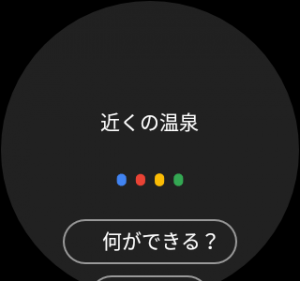
I also searched for day trips to hot springs after descending the mountain by calling Google using audio.
Furthermore, this model, a smartwatch equipped with Google's "Wear OS," can be used in a wider range of situations than Garmin, in that it can be used not only for outdoor activities but also for everyday use as it is, and can be used in a wider range of situations than Garmin. Of course, you can sync your smartphone with your watch to view and operate notifications, calendars, weather forecasts, incoming calls, etc., and depending on the app, you can also reply to messages using voice. You can also use it in your own way, such as audio search, input and displaying notes, checking news, emails, calendars, translation, and health management, depending on the app, and you can use it in your own way, without using a smartphone.
Recently, it is no longer possible to connect to home devices such as smart speakers using Google Assistant (although I haven't actually tried it yet). While there are complaints that sensors such as heart rate monitors and thermometers have been omitted, and athletes are unable to track and analyze using more detailed data, what is the big appeal of the WSD-F20 is that it currently has sufficient functionality and ease of use for beginners and general hikers, and is expected to see a wide range of apps, including those not just outdoors, in the future, with the influence of the giant Google, and that there is a hope that things can be made will expand even more. The drawback is that for better or worse, it depends on the third-party app, and if you are using maps offline, you need to download the relevant area in advance.
EPSON - Specializing in functions for mountain climbing and running
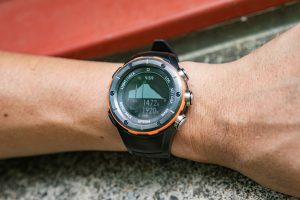
Although it is low-priced, it is fully functional as an outdoor watch for mountain climbing, with navigation functions that involve registering routes.
the MZ-500 focuses on specific activities such as mountain climbing and running, and pursues a variety of functions . There are several disadvantages, such as the only activities that support mountain climbing and running (trail running), no offline maps (and even if it's called map display, it's only a schematic diagram of the registered route), and the ability to link with smartphones, but when it comes to mountain climbing, there are at least some useful features that the WSD-F20 doesn't have. For example, while recording your activity, you can view more detailed data in real time, such as the altitude, distance traveled, and elapsed time of your current location, as well as the speed of rising (decreasing), slope, and calorie burnout. If you are running, you can also get pitch and stride. If you register a route created in advance on your device or if it is a route registered on the main unit in Japan, it will not only navigate the time and distance to your destination at the actual site, but also how far you will need to climb (altitude). However, just like with Garmin, this was not as accurate and convenient as it was, and considering the necessary effort, it wasn't enough to make me want to use it proactively. The result is still a supplement to the project, and it seems there is still a long way to go before it can be used in practical use. NeoRun is a dedicated software that imports tracking data and manages history after climbing, and is generally excellent, allowing you to record your heart rate by recording time, distance, calories burned, steps, altitude rise, descent altitude, route of action, and optionally compare your heart rate. It can be linked to some extent with other apps, so it would be enough to say that it's only good for mountain climbing and running.
7. Accuracy: Although there are some quirks, it has solid stability that none of which is found on smartphones
Now that it's common to know your current location on your smartphone, I think it's easy to get your current location, but things aren't that easy. Regardless of the detailed mechanism, it is said that when more precision is required, there will be subtle differences in hardware and software.
This time, it is difficult to compare the mechanism itself, so we will summarize the extent of the errors by comparing the altitude and current location at the same point at various times over the past month, and by comparing the routes tracked during the mountain climb later.
In conclusion, there was no fatal variation between the three devices. However, looking at it in more detail, there were some points that I was concerned about.

We have tried to reflect GPX data tracked on each model on a topographic map. It's hard to understand, but perhaps Garmin is not accurate or too accurate, so the route often falls slightly off the trail.
First of all, in Casio, when using YAMAP, the current location and altitude display, as well as the course tracking accuracy, was quite high, so I was able to check my location information with the most confidence of the three. However, when I look at the altitude of the original "TOOL" at the same time, it is often the case that this one is off. Of course, it may be possible to improve accuracy by setting methods, but for better or worse, it was a glimpse of how it depends on the app.
Next is Garmin. Although the altimeters have automatic altitude correction set, they often slip off, so they have to be manually corrected each time. My current location is slightly off, and when I checked the trajectory later, I often saw a slight deviation compared to the others (photo above), and as a result, the walking distance was longer than the other two models (by the way, when measuring the distance, the setting takes into account the slope). Incidentally, it seems that this trend is almost the same when I ask two friends who are fenix 5 users.
While Epson's version is rarely particularly inaccurate among the three, I get the impression that it wasn't as accurate as YAMAP.
Next page: Go to "Summary - What are the recommended types?"


